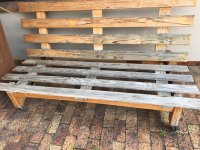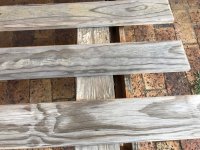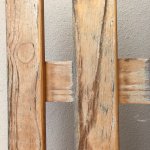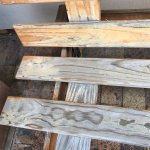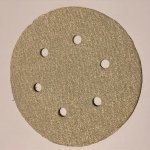Jmacpherson
Member
- Joined
- Jun 9, 2016
- Messages
- 215
Hi all
I'm looking for some sander advice in terms of which avenue or path to go down, ie. 150mm or 125mm route.
I'm considering the Rotex option or even the possibly the Rotex and ETC EC combined.
I've tested/handle the ETC EC 150/5 at my tool supplier and it is very comfortable in the hand and very ergonomic.
I've done the same with the Rotex RO 150. I found the 150 rather heavy and I found the circumference of the body quite large in terms of grip area for my hand. I'm aware that the sander will sit flat and then the weight becomes a non-issue unless using it vertically.
I'm in the process of arranging a demo of the RO 125 and ETS EC 125/3 because of my concerns regarding the size and weight of the RO 150. I have occassional issues with my right wrist, hence ergonomics is key to me.
My tool supplier doesn't carry stock on hand of the 125mm range of products or accessories, they just don't sell enough of it.
150mm is more popular so they always carry stock.
Question, how much smaller is body/frame/grip area of the RO 125 vs RO 150? It is hard to tell from images online but I don't see much difference?
To assist your answers this is what I intend using the sanders on:
Outdoor pressure treated wood and making outdoor furniture. Timber dimensions generally range from 38mm to 114mm. If assembled together might be in the 300-400mm wide.
Stripping off old coatings from outdoor gates and furniture. - Rotex heaven
MDF, never wider than 600mm. The odd gloss white interior shelf unit but I try to avoid MDF due to having to seal the edges. ETS would be perfect here.
Plywood now and then
Looking to start working with some exotic hardwood - think rotex or both would be beneficial?
My own fascia boards to be repainted every few years. - rotex heaven
I know 150 removes 44% more material than 125.
My tool supplier doesn't stock 125 so everything has to be ordered in so I have that in the back of my mind
Sometimes 150 is just too big. Try sanding 20mmx20mm / 1inchx1inch with a 150mm sander, bit of a pain.
I know some people suggest sticking to one size so that you can share abrasives.
Would it be worth considering say a Rotex 125 and a ETS 150 instead? Or vice versa and go with a Rotex 150 and ETS 125 for the smaller
Thanks
I'm looking for some sander advice in terms of which avenue or path to go down, ie. 150mm or 125mm route.
I'm considering the Rotex option or even the possibly the Rotex and ETC EC combined.
I've tested/handle the ETC EC 150/5 at my tool supplier and it is very comfortable in the hand and very ergonomic.
I've done the same with the Rotex RO 150. I found the 150 rather heavy and I found the circumference of the body quite large in terms of grip area for my hand. I'm aware that the sander will sit flat and then the weight becomes a non-issue unless using it vertically.
I'm in the process of arranging a demo of the RO 125 and ETS EC 125/3 because of my concerns regarding the size and weight of the RO 150. I have occassional issues with my right wrist, hence ergonomics is key to me.
My tool supplier doesn't carry stock on hand of the 125mm range of products or accessories, they just don't sell enough of it.
150mm is more popular so they always carry stock.
Question, how much smaller is body/frame/grip area of the RO 125 vs RO 150? It is hard to tell from images online but I don't see much difference?
To assist your answers this is what I intend using the sanders on:
Outdoor pressure treated wood and making outdoor furniture. Timber dimensions generally range from 38mm to 114mm. If assembled together might be in the 300-400mm wide.
Stripping off old coatings from outdoor gates and furniture. - Rotex heaven
MDF, never wider than 600mm. The odd gloss white interior shelf unit but I try to avoid MDF due to having to seal the edges. ETS would be perfect here.
Plywood now and then
Looking to start working with some exotic hardwood - think rotex or both would be beneficial?
My own fascia boards to be repainted every few years. - rotex heaven
I know 150 removes 44% more material than 125.
My tool supplier doesn't stock 125 so everything has to be ordered in so I have that in the back of my mind
Sometimes 150 is just too big. Try sanding 20mmx20mm / 1inchx1inch with a 150mm sander, bit of a pain.
I know some people suggest sticking to one size so that you can share abrasives.
Would it be worth considering say a Rotex 125 and a ETS 150 instead? Or vice versa and go with a Rotex 150 and ETS 125 for the smaller
Thanks

